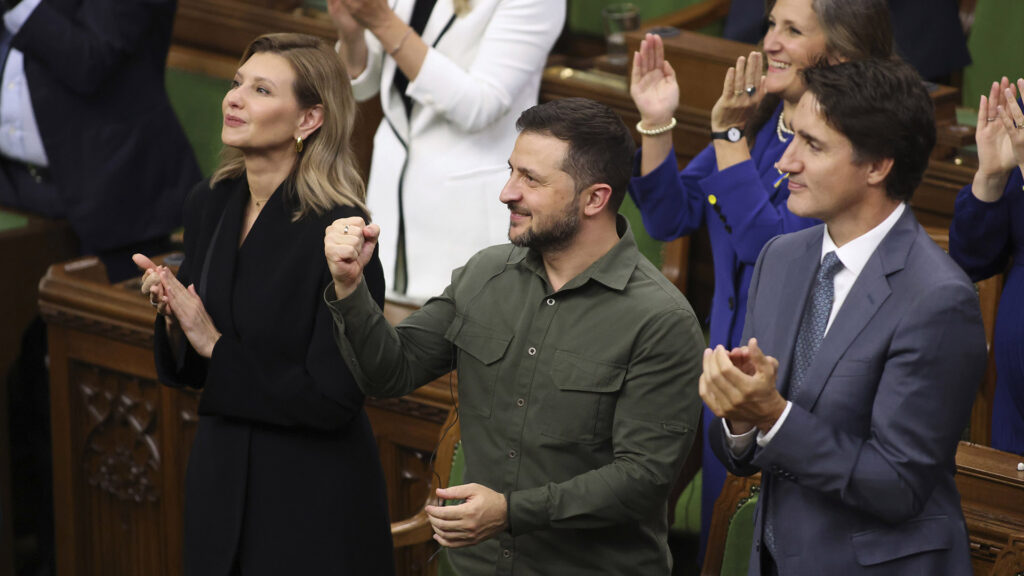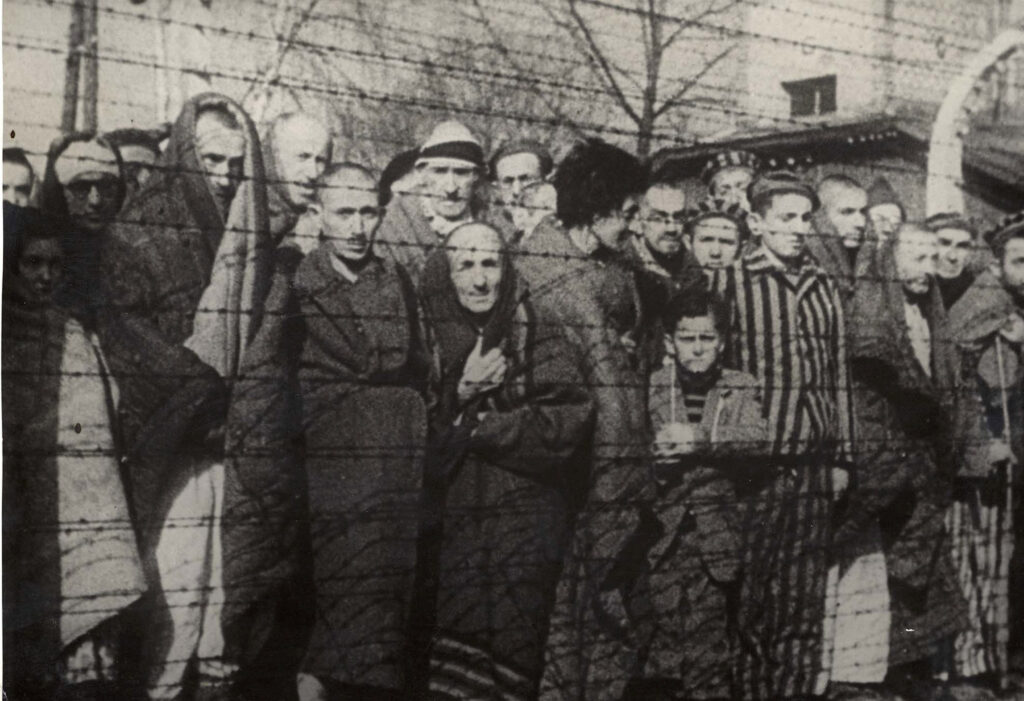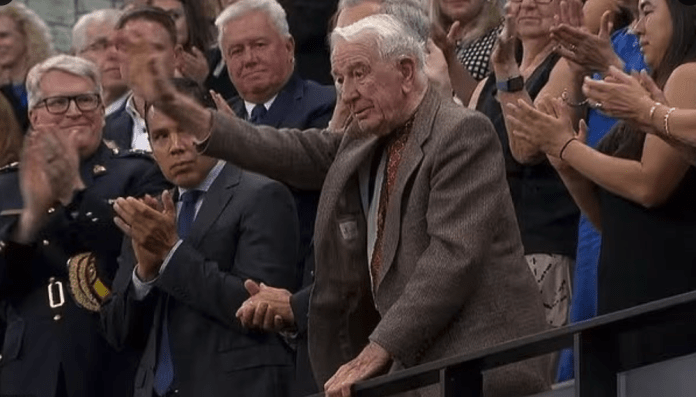When everyone thought that Justin Trudeau couldn’t embarrass Canada on the international level more after the India debacle, he proved everyone wrong and did it again. On the 22nd of September Justin Trudeau, and his party members and Canadian generals along with President Volodymyr Zelensky who was on a state visit applauded and gave a standing ovation to a 98 year old Nazi veteran. The man was Yaroslav Hunka, who was a soldier of 14th Waffen Grenadier Division of the SS (1st Galician), volunteered to join the SS Galizien Nazi unit in 1943.

The blunder sparked severe outrage and condemnation from Jewish groups and international communities who called it a “horrendous violation of the memory of the millions of people who died in the Holocaust”. Prime minister Justin Trudeau though apologised, he did it on the behalf of the parliament not himself. Later The house speaker Anthony Rota resigned taking the blame of the incident. According to Rota, he invited Hunka because he was from his riding (district) and he was not aware of his Nazi ties. He said that no one else knew about his intention or his remarks before he delivered them. However, according to some political pundits and senior opposition leaders, Rota was scapegoated on the incident and the PM’s apology was insincere and dismissive of the matter. Also none of the generals of the Canadian armed forces apologised for the gaffe.
Who is Yaroslav Hunka and what are the Nazi War Crimes he was Related to?
Yaroslav Hunka, a World War II Nazi veteran of Ukrainian and Canadian residents, served in the Nazi 14th Waffen Grenadier Division of the SS (1st Galician). He was born in Poland (now Ukraine) in 1925, and in 1943 he enlisted in the SS Galizien. In the years after arriving in Canada in 1954, he was involved in the Ukrainian-Canadian community.
During World War II, the Nazi unit called the Galicia Division, was primarily composed of Ukrainian volunteers from the Galicia region. It participated in atrocities on innocent civilians while fighting against Soviet, Polish, and Yugoslav partisans. Some of them are:
Huta Pieniacka Massacre
On February 28, 1944, the Galicia Division, along with other Ukrainian nationalist units, attacked the Polish village of Huta Pieniacka, which was a shelter for refugees and a partisan base. They killed about 1,000 people, mostly women, children and elderly, and burned the village to the ground.
Pidkamin Massacre
On March 12, 1944, the Galicia Division and other Ukrainian formations surrounded the town of Pidkamin, where many Poles had gathered for a religious pilgrimage. They massacred between 150 and 250 people, using machine guns, grenades and bayonets.
Palikrowy Massacre
On March 16, 1944, the Galicia Division took part in an attack on the Polish village of Pali Krowy. They killed around 365 people, including 110 children under the age of 14. They also looted and burned the village.
These massacres were part of a larger campaign of ethnic cleansing by the Ukrainian Insurgent Army (UPA) against the Polish minority in Volhynia and Eastern Galicia in the Holocaust.
The Horrific History of Holocaust
The Holocaust was the systematic murder of European Jews during World War II by Nazi Germany and its allies. Approximately six million Jews were murdered in Germany-occupied Europe between 1941 and 1945 via mass shootings, gas chambers, and other techniques. The Holocaust was a component of the Nazis’ racial and imperialist ideology, which sought to establish a “living space” for the “pure” German race.

Besides the Jews, other groups that the Nazis deemed “inferior” or “enemies” were also exterminated, including the Roma and Sinti (Gypsies), Slavs, Soviet POWs, political opponents, homosexuals, Jehovah’s Witnesses, and persons with disabilities. Around 17 million individuals are thought to have died as a result of the Nazi genocide.
Soon after the Nazis took power in 1933, there was a rapid increase in Jewish persecution. They enacted anti-Jewish legislation, shunned Jewish establishments and planned the pogrom known as Kristallnacht in 1938. Many Jews attempted to emigrate from Germany, but they had trouble finding destinations that would take them. The Nazis seized Poland and other nations after World War II broke out in 1939, creating ghettos, where they imprisoned Jews in overcrowded and unhygienic circumstances.
Invading the Soviet Union in 1941, the Nazis launched a systematic campaign of mass Jewish murder by Einsatzgruppen, mobile death groups. Additionally, they enlisted local accomplices who took part in the murders or assisted in the roundup and identification of Jews. The Nazis also experimented with a variety of murderous techniques, including gas chambers and gas vans. They established numerous concentration camps where they took Jews by train and gassed them to death. These camps included Auschwitz-Birkenau, Treblinka, Belzec, Sobibor and Chelmno. Some Jews were not put to death right away; instead, they were forced to work as slaves or were the victims of horrifying medical experimentation.
It came to an end in 1945 when the Allies defeated Nazi Germany. Despite being freed from the camps, many survivors had to deal with trauma, illness and displacement. Some people went home again to find it ruined or inhabited by others. Many of them moved to Israel or other nations. Many Nazi offenders eluded justice, however some were prosecuted and sentenced for their crimes. The Holocaust has been remembered in memorials, museums and popular culture serving as both a warning against prejudice and intolerance and a representation of the worst aspects of humanity.
The Holocaust was carried out with the knowledge and cooperation of many people in Germany and other countries. Some people tried to help or rescue Jews, but they faced great risks and difficulties. Many Jews also resisted the Nazis in various ways, such as organising uprisings in ghettos and camps, joining partisan groups, or hiding in forests or attics.
After the war several countries tried to persecute the war criminals, but most of them fled and tried taking shelters in other countries. For example after the war, the Galicia Division members were extradited to the Soviet Union, Poland and Yugoslavia where they faced imprisonment or execution. But some were released and settled in Canada.
Presently, the Canadian administration would like to be blissfully unaware of this matter, however the international community, both Jewish and others, take this seriously. Such incidents reflects, will and intent of the nation to provide refugees to wrongdoers. The Canadian government shall retrospect the legitimacy of such a policy which provides safe haven to offenders. If no suitable actions are taken then days are not far wherein these miscreants will disintegrate Canada into fragments.

